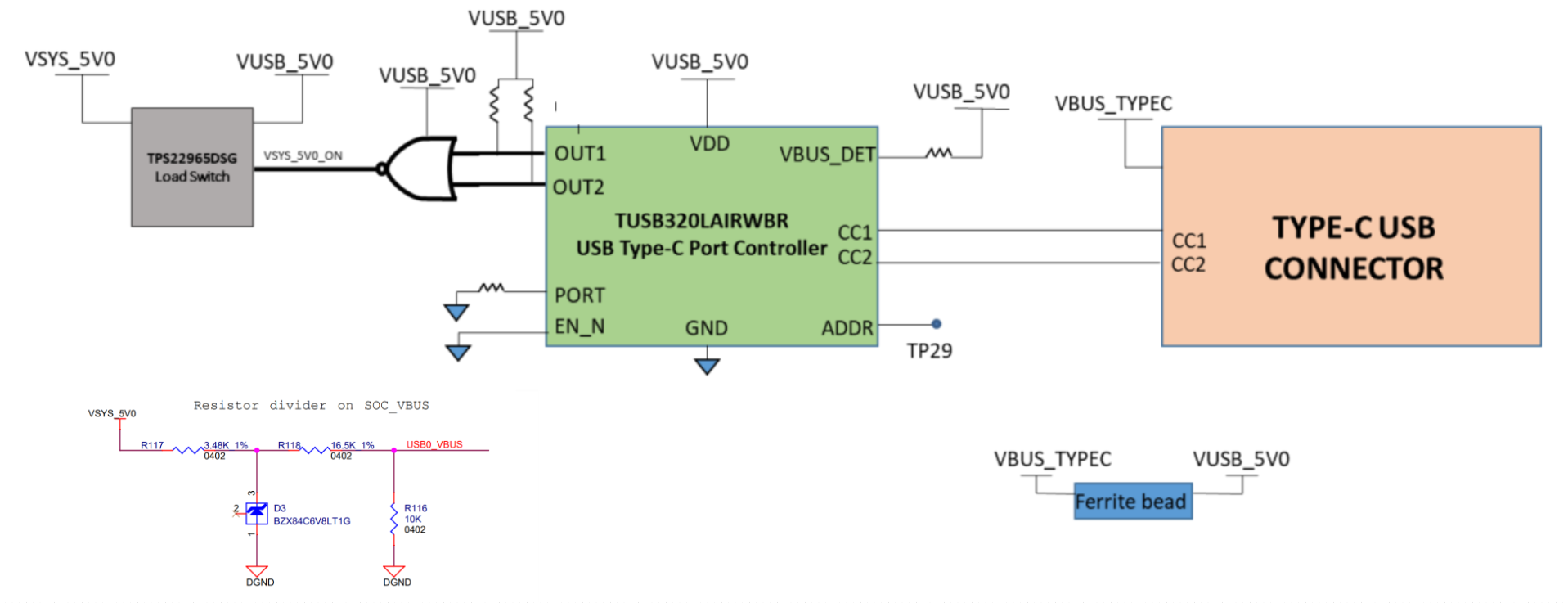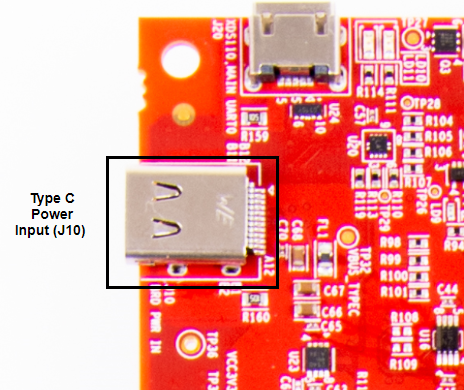SPRUJ12F August 2021 – January 2024 AM2431 , AM2432 , AM2434
- 1
- Abstract
- Trademarks
- 1Preface: Read This First
- 2Kit Overview
- 3Board Setup
-
4Hardware Description
- 4.1 Functional Block Diagram
- 4.2 BoosterPack Headers
- 4.3 GPIO Mapping
- 4.4 Reset
- 4.5 Clock
- 4.6 Memory Interface
- 4.7 Ethernet Interface
- 4.8 USB 2.0 Interface
- 4.9 I2C Interface
- 4.10 Industrial Application LEDs
- 4.11 UART Interface
- 4.12 eQEP Interface
- 4.13 CAN Interface
- 4.14 FSI Interface
- 4.15 JTAG Emulation
- 4.16 Test Automation Interface
- 4.17 SPI Interface
- 5References
- A E3 Design Changes
- B Revision A Design Changes
- Revision History
3.1.1 Power Input Using USB Type-C Connector
The AM243x LaunchPad is powered through a USB type-C connection. The USB Type-C source should be capable of providing 3A at 5 V and should advertise the current sourcing capability through CC1 and CC2 signals. On AM243x LP, the CC1 and CC2 from USB type-C connector are interfaced to the port controller IC (TUSB320LAIRWBR). This device uses the CC pins to determine port attach and detach, cable orientation, role detection, and port control for Type-C current mode. The CC logic detects the Type-C current mode as default, medium, or high depending on the role detected.
The Port pin is pulled down to ground with a resistor to configure it as upward facing port (UFP) mode. VBUS detection is implemented to determine a successful attach in UFP mode. The OUT1 and OUT2 pins are connected to a NOR gate. Active low on both the OUT1 and OUT2 pins advertises high current (3A) in the attached state which enables the VUSB_5V0 power switch to provide the VSYS_5V0 supply which powers other regulators and LDOs.
In UFP mode, the port controller IC constantly presents pull-down resistors on both CC pins. The port controller IC also monitors the CC pins for the voltage level corresponding to the Type-C mode current advertisement by the connected DFP. The port controller IC de-bounces the CC pins and waits for VBUS detection before successfully attaching. As a UFP, the port controller device detects and communicates the advertised current level of the DFP to the system through the OUT1 and OUT2 GPIOs.
The AM243x LP power requirement is 5 V at 3A and if the source is not capable of providing the required power, the output at the NOR gate becomes low that disables the VUSB_5V0 power switch. Therefore, if the power requirement is not met, all power supplies except VCC3V3_TA will remain in the off state. The board gets powered on completely only when the source can provide 5 V at 3A.
 Figure 3-2 Type-C CC
Configuration
Figure 3-2 Type-C CC
Configuration| OUT1 | OUT2 | Advertisement |
|---|---|---|
| H | H | Default current in unattached state |
| H | L | Default current in attached state |
| L | H | Medium current (1.5A) in attached state |
| L | L | High current (3.0A) in attached state |
The AM243x LaunchPad includes a power solution based on discrete regulators for each of the power rails. During the initial stage of the power supply, 5 V supplied by the type-C USB connector is used to generate all of the necessary voltages required by the LaunchPad.
 Figure 3-3 USB Type-C Power Input
Figure 3-3 USB Type-C Power InputDiscrete DC-DC buck regulators and LDOs are used to generate the supplies required for the AM243x system on a chip (SoC) and other peripherals
Two DC-DC buck regulators (TPS62822) are used to generate the 3.3 V main supply and VDD_CORE_0V85 from the 5 V input supply.